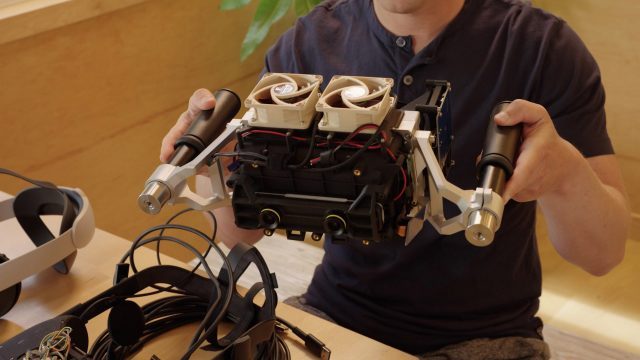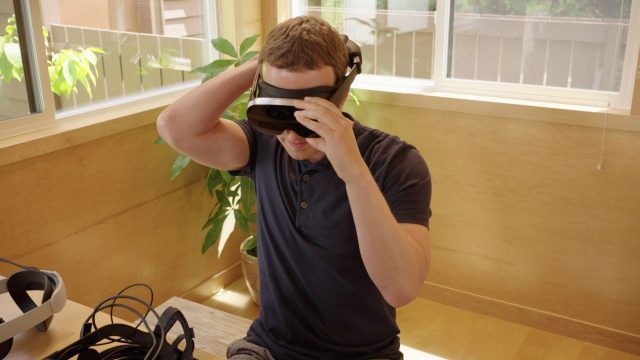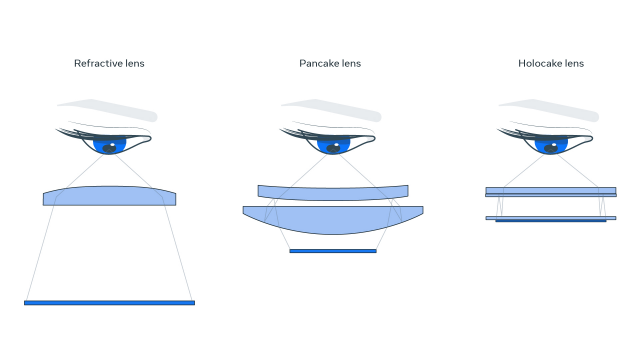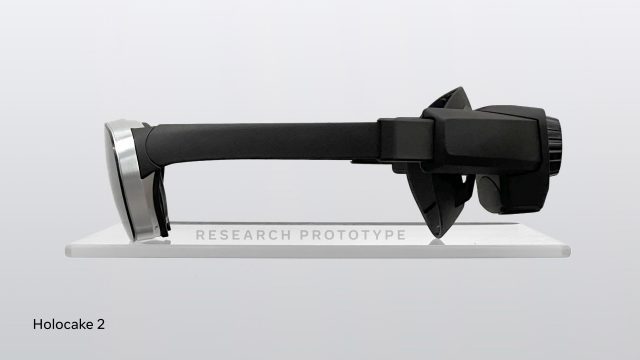High Dynamic Range
Zuckerberg said that of the four key challenges he and Abbrash overviewed “the most important of these all is HDR.”
To prove out the impact of HDR on the VR experience, the Display Systems Research team built another prototype, appropriately called Starburst. According to Meta it’s the first VR headset prototype (‘as far as we’re aware’) that can reach a whopping 20,000 nits.

The goal of HDR however is not to fry your eyes, but to give realistic luminance to things that actually are starkly bright in real life. For instance a fire, explosion, firework, or even bright reflections off of a window on a cloudless day. All of these things seem to ‘pop’ in real life because they’re so much brighter than the world around them. Being able to replicate that ‘pop’ of brightness in VR is essential to passing the visual Turing Test, says Meta.
For comparison, Quest 2’s display maxes out at 100 nits, and high-end HDR TVs reach around 2,000 nits. That means the Starburst prototype can produce a range of brightness that’s 10 times brighter than even some of the best HDR TVs out there.
And while Sony’s upcoming PlayStation VR 2 is expected to be the first commercially available HDR VR headset, ‘HDR’ isn’t exactly well defined, so there’s no telling if it will hit 1,000 nits, let alone 2,000.
Downsizing

While many of the company’s prototype VR headsets sacrifice weight and size in order to prove out those fundamental ideas, Meta is also focused on drastically shrinking the VR headset form-factor. To that end, the company has taken its proof-of-concept holographic folded optics research and turned it into a real, working VR headset called Holocake 2.
This impressively compact prototype tackles the two biggest size limitations of contemporary VR headsets: the length of the optical path and the width of lenses.
In order for the lenses in a VR headset to do their job, they must be placed a certain distance from the display. If you move them any closer you simply won’t be able to focus the image correctly. But using ‘pancake’ optics (also known as ‘folded’ optics), effectively shrinks the distance between the lens and the display by ‘folding’ the path back on itself using polarization to bounce the light back and forth before finally reaching the eye.
As you shrink that distance you start to see that the thickness of the lenses are actually further limiting how close you can put the display to the eye. To that end the Holocake 2 prototype uses holographic lenses which are significantly thinner than traditional lenses.
These are essentially thin holographic films that have a hologram of a traditional lens embedded within them. Even though they’re thin, they manipulate light similarly to the thicker lens which they are modeled from.

The combination of holographic lenses and pancake optics—hence holo cake—is the key that makes Holocake 2 so compact.
“The creation of the holographic lens was a novel approach to reducing form factor that represented a notable step forward for VR display systems,” says Meta. “This is our first attempt at a fully functional headset that leverages holographic optics, and we believe that further miniaturization of the headset is possible.”

However, this is a PC-tethered headset which means that it will need some additional bulk (compute and battery) in order to reach the standalone form-factor that Meta is gunning for. And unfortunately, Meta says, Holocake 2 requires a laser light source to make its holographic optics work well, and they aren’t yet at the size or cost needed to be practically implemented in a real product.






